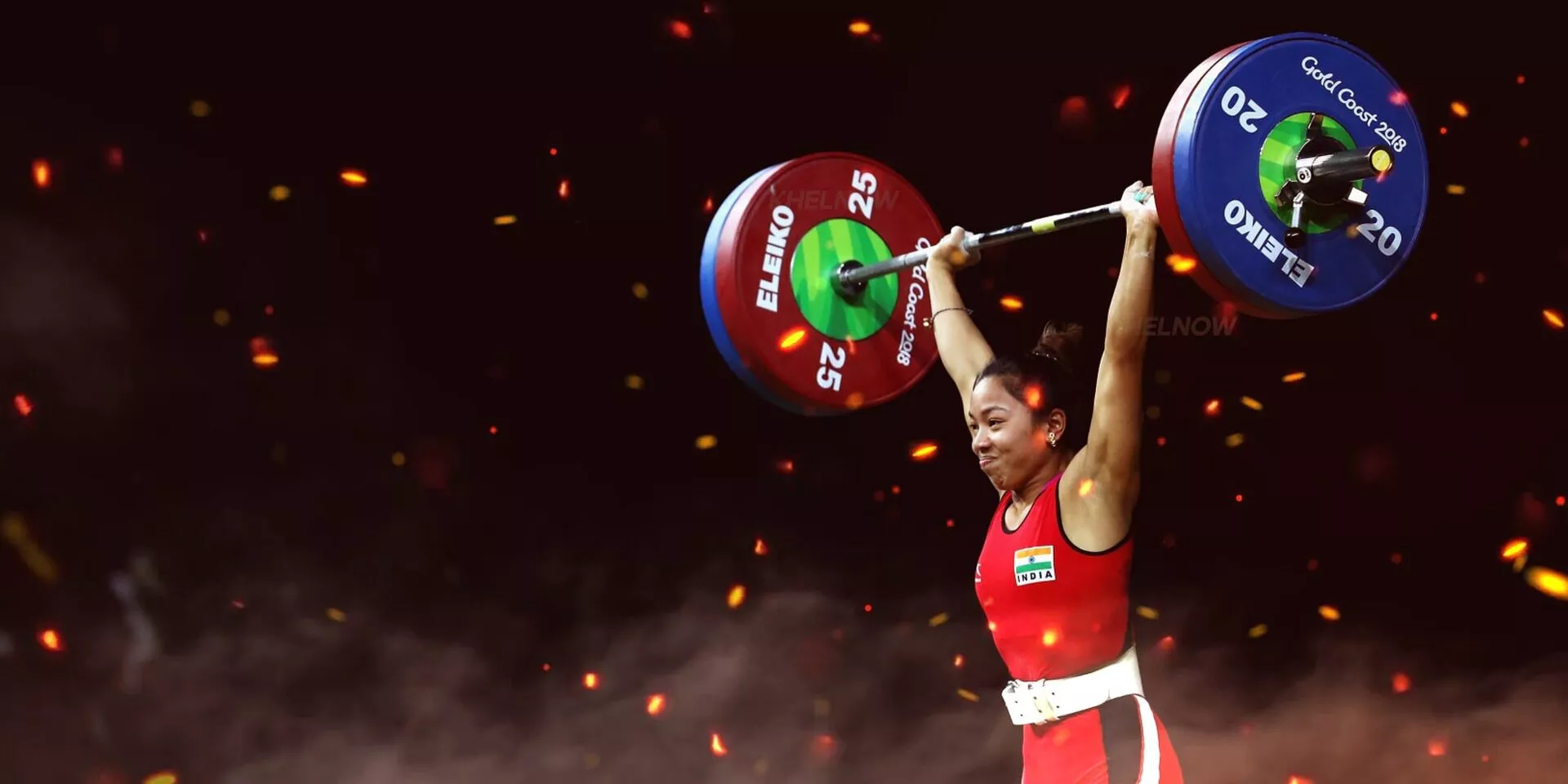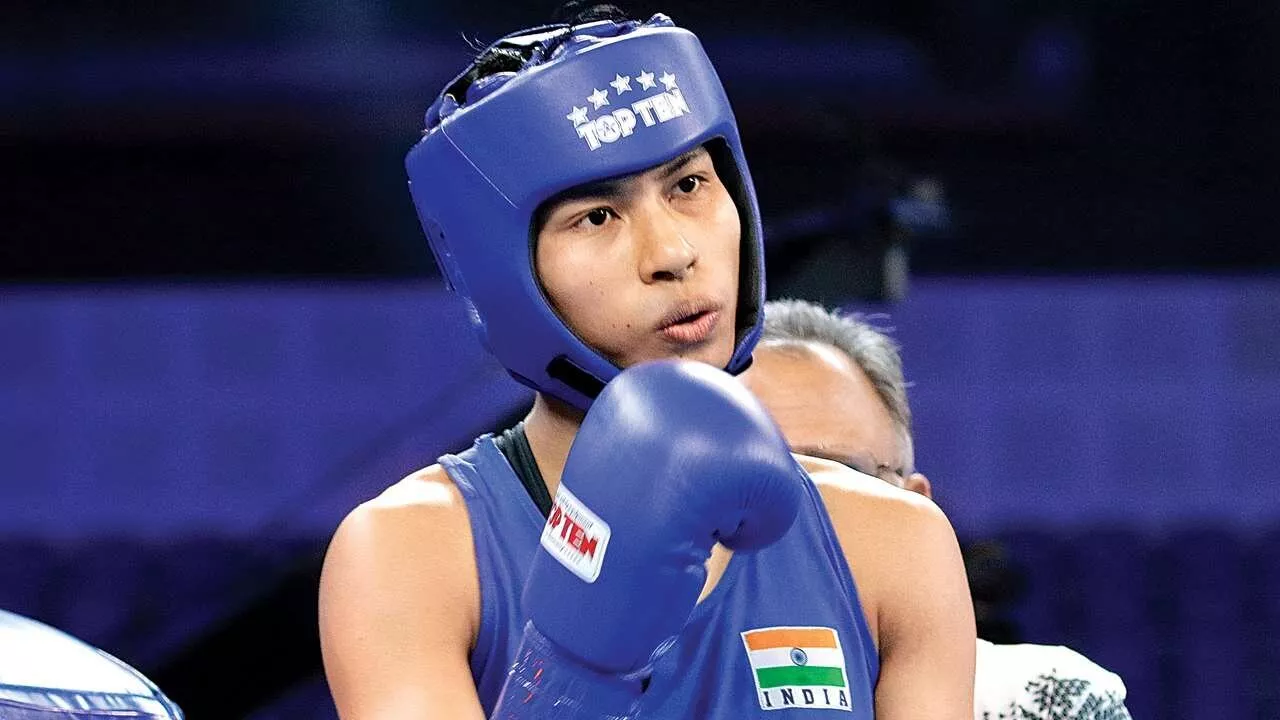Why Tokyo Olympics should be a stepping stone for growth of sports in Northeast

(Courtesy : Quartz/Olympics)
The two athletes from the region have delivered India's only medals so far at the Tokyo Olympics.
Lovlina Borgohain assured India of another medal at the Tokyo Olympics after defeating Chen Nien-chin of Taiwan and entered into the semi-finals of the women’s welterweight boxing. Following in the footsteps of Mirabai Chanu, the 23-year-old boxer showed immense resilience and a killer instinct to make it to the last four.
Interestingly, Borgohain is only the second female boxer from India to win a medal at the Olympics after MC Mary Kom, the legendary boxer from Manipur. Athletes from the region have time and again represented India and made us proud on the grandest stages, but the development of sports infrastructure still looks underwhelming, given the huge potential in the region.
Sports is a state subject in India, but the Indian government can certainly provide an impetus to the region in the form of infrastructure, given its performances in a range of sports in the last odd-decade. This will have several long-lasting positive effects apart from just sports development. Before discussing that, let us delve into the current environment for sports in the region.
Sports in Northeast India
Over the last three decades, football emerged as a major sport in states such as Mizoram, Meghalaya and Manipur. However, a plethora of new sports have caught the imagination of the youth in recent times - namely boxing, weightlifting, hockey and athletics. On the other hand, football has continued to thrive, with the region producing no less than 100 professional footballers currently in the circuit.
Fencing, judo, wushu and so on are a few more that have global representation from the region. Why then, does sports infrastructure in the ‘Seven Sisters’ continue to be ignored and forgotten? Some state governments have been trying to do their best within their limited budgets and abilities.

For instance, sports have been accorded ‘industry status’ in Mizoram by the state government, with an aim to further bolster sporting activities and investment. “Sports should not be considered just as entertainment and enjoyment. With the involvement of many men and women in different sports, we can curb various societal negativities, specially misuse of drugs,” rightly points out Robert Romawia Royte, the sports minister of Mizoram.
However, the situation isn’t the same in states such as Nagaland and Arunachal Pradesh. Home to Talimeren Ao, the first Indian football captain, Nagaland suffers from a lack of funds in sports, to not just build new infrastructure but also maintain the old ones. Stadia and facilities in the capital Kohima and commercial hub Dimapur are crumbling, but haven’t been re-invigorated due to the lack of funds.
The state won 11 awards at the National Games in 2007, its debut at the tournament. Insurgency troubled states such as Nagaland and Arunachal Pradesh can be helped by building infrastructure and fostering an environment conducive to sports, as it gives the youth opportunities to be positive.
Also Read: My dream of winning Olympic medal has come true, rejoices Mirabai Chanu
“I have sought a one-time grant from the central government for infrastructure development. We are introducing a sports policy and identifying some prioritized disciplines,” said Neiphiu Rio, CM of Nagaland.
Arunachal Pradesh has had its own share of problems with infiltration and cross-border concerns, but there are other issues as well that can be addressed internally. There are no PSUs or industrial units in the state to take care of athletes. Most people live in rural areas and connectivity is a major issue. Lack of interest among parents, too, is a worry.
“The absence of infrastructure and technical know-how are reasons why we have not been able to compete at the national level. We have just one stadium in state capital Itanagar. We need a multi-purpose stadium in each district headquarters,” said Bamang Tago, secretary of the Badminton Association of Arunachal.
Moving on, states such as Tripura and Assam have perpetually over-performed in athletics in recent years, with almost a non-existent sports setup. Dipa Karmakar, the gymnast from Tripura, who won a bronze at the Commonwealth Games in Glasgow in 2014, continues to represent India, while Hima Das is India’s record holder in the 400m. They’ve been going about their jobs away from the limelight.
ALSO READ: I’m reaping benefits of my hard work, asserts Lovlina Borgohain
The current situation
Allocation of funds from the Ministry of Sports and Youth Affairs has been meagre over decades. It has seen a pygmy hike recently, but clearly, that isn’t enough. In 2017, the Sports Budget for Northeastern India was raised from Rs 131.33 crore to Rs 148.4 crore. In 2021-22, the sports budget for the entire nation witnessed a decline, a fact attributed to the COVID-19 pandemic.
However, there have been some fresh moves that will help sporting activities in the region. Khelo India centres are being opened in seven states across the country, and Mizoram, Arunachal Pradesh and Manipur find their names on the list. This will further accelerate sporting activities and will invite investment from the corporate sector as well.

An added impetus has been provided to Arunachal Pradesh, a state which was in dire need of the same. 52 Khelo India centres will be opened in 26 districts, with a budget allocation of Rs 4.12 crore. That’s a good start, at least. Manipur, already a hub, will also get 16 such centres, further accelerating the sports atmosphere in the region.
The South Asian Games, held in Guwahati/Shillong in 2016, had witnessed an investment worth Rs 350 crore to upgrade facilities, connectivity and security infrastructure. The tournament was successfully hosted by the two cities, with 4,500 athletes and officials participating from SAARC nations and beyond.
Also Read: Who are India’s realistic hopes for a Tokyo Olympics medal after Day 8?
Manipur CM N. Biren Singh, while awarding Mirabai Chanu with Rs 1 crore and a government job as ASP (Sports), also announced that the government will establish a world-class weightlifting academy in the state soon.
These measures are too far and few between – and even then, there’s no stopping the talent that comes through.
Changes required – sporting and non-sporting
We’ve made our case why Indian governments – both state and central – must work in sync and beyond political margins to support a well-defined sports ecosystem in the region. While strengthening India’s presence in the global sports arena, this will also promote youth in the region, infamous for the usage of drugs and creating internal disputes, to join a different sector and bring gradual peace to the usually-disturbed regions.
The Central and state governments also need to educate the rest of India, ministers and people in positions of power that Northeastern people are Indians. They’ve been subjected to racism and while the acceptance has increased over the last few years, there’s still a long way to go. Boxer MC Mary Kom broke down in tears at an event in Mumbai in 2013.
The Olympic bronze medalist had said, “Okay, I am from the Northeast, no problem… but I am Indian.” Indian football team captain Sunil Chhetri was called ‘Nepali’ on a live Instagram chat and Baichung Bhutia, former Indian captain, was called ‘Chinese’ on Twitter.
This has to stop – today and right at this very moment.
[KH_RELATED_NEWS title="Related News |Article Continues Below"][/KH_RELATED_NEWS]
Conclusion
The biological benefits that Northeastern people enjoy can only be channelled with the right facilities and support. While some states already enjoy strong state-level leagues and channels to supply talent to the national level, India needs to use its resources to take it a step further. An ecosystem needs to be built that not only supplies talent, but also nurtures it.
This has to be done in more regions. The far-reaching benefits are just too many to be ignored. Higher investment in sports in the region, both in the form of CSR funding or governmental support, can play an instrumental role in being the support the region needs.
For more updates, follow Khel Now on Twitter, Instagram and join our community on Telegram.
- 'No one came after my injury' - Mirabai Chanu calls for consistent support from fans
- LA28 reveals competition schedule for Paralympics 2028; check full sport-wise schedule
- LA Olympics 2028: Check full competition schedule, dates, venues of all sports
- Abhinav Bindra named torch bearer for 2026 Winter Olympics
- Why is August 7 celebrated as National Javelin Day?
- Top 10 achievements by Indian players in world badminton
- New Zealand, Pakistan likely to miss the LA 2028 Olympics as ICC set to approve regional qualifying format - Reports
- LA28 Olympics: Cricket schedule announced, gold medal match to take place on this date
- LA Olympics 2028 full schedule out, look at potential key dates for Indian contingent
- Does Neeraj Chopra hold any Olympic record in men's javelin throw?